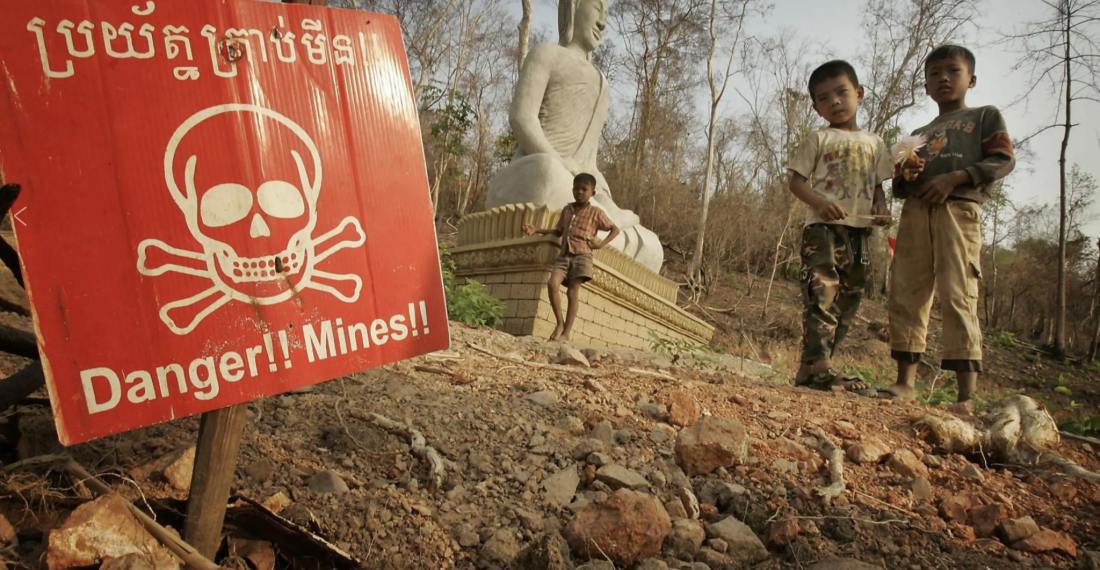Walking through the temples of Angkor Wat, the sound of musical instruments was making its way through the jungle, complementing the birds. Once I got closer to the musical instruments, I realised that that the singers were victims of landmines, trying to bring awareness to this danger through music. They were not looking for pity or money, simply to share flyers on the history of landmines in Cambodia and its terrible effects that continue to affect civilians. This encounter sparked my interest as Cambodia is rarely mentioned in news or research papers.
During the Vietnam War (19550-1975), the United States of America, bombed Cambodia as there were reports of the Viet Cong hiding in the region. Many minefields were left behind due the US bombing campaigns. As such many Cambodians rallied behind the communist party and its leader Pol Pot who promised to put a stop to the American bombings. Finally, in April 1975 the Khmer Rouge led by Pol Pot took control of Phnom Penh. That night, the streets were filled with celebrations and people were hopeful for the future. The festivities however did not last, as the Khmer Rouge introduced a strict curfew. The next day, Pol Pot forced everyone to move from the cities to the rural areas in order to build what he called an agrarian classless socialist society. Everyone had to follow a rigid schedule and work in the rice fields. Children were taken from their mothers and raised in communal schools. Life was tightly controlled; people were told what to wear, eat and whom to marry. Anyone who disagreed was tortured and killed in the many killing fields built throughout the country. Pol Pot also further developed many intricate minefields to discourage people from attacking the regime. The Khmer Rouge killed around 1.7 million people and although the government was overthrown in 1979, landmines continue to kill civilians and remind people of the horrors of the genocidal regime.
More than one million people in Cambodia live in fear as they work in areas contaminated by mines. Landmines disturb farming and agriculture which employ more than half of the labour force in the country. Therefore, landmines do not only cause heavy injuries and deaths but also highly disturb the economy of a country devastated by poverty. Moreover, landmines further disturb education as children cannot safely make it to school. In addition, children are most vulnerable as many suffer injuries due to simply playing in the fields.
Mines Advisory Group (MAG), a non-governmental organisation alongside other NGOs, have cleared many of the unexploded mines, creating a safer environment for the civilians. Although much effort is put into eradicating landmines, there is little hope that Cambodia will reach its aim of removing all landmines by 2025. Much work is still needed as on average unexploded mines still cause one death or injury a week in Cambodia. Despite such horrors, the Khmer people remain hopeful and with a smile continue to share their history to anybody who will give them five minutes of their day.






